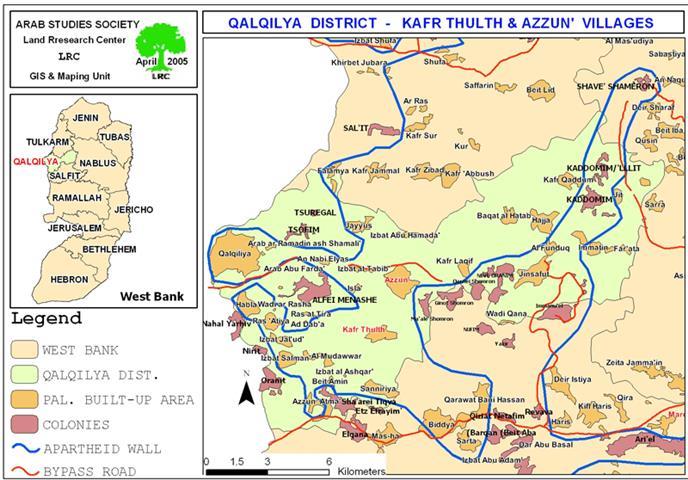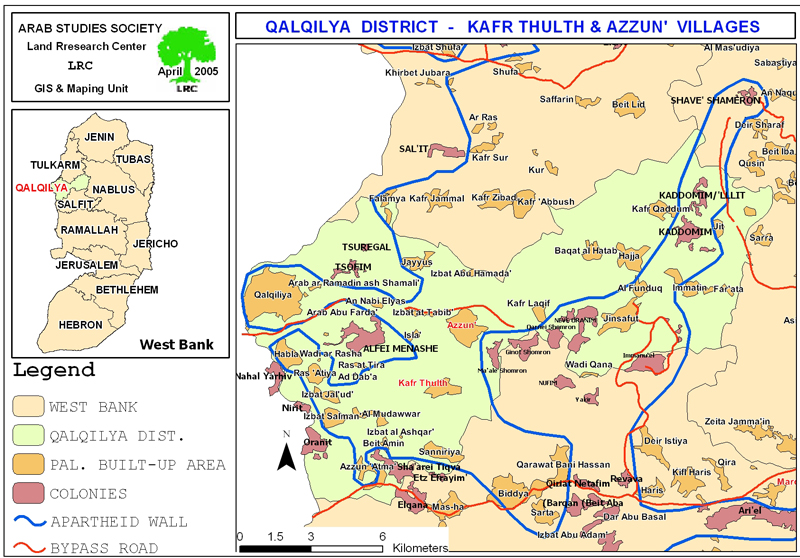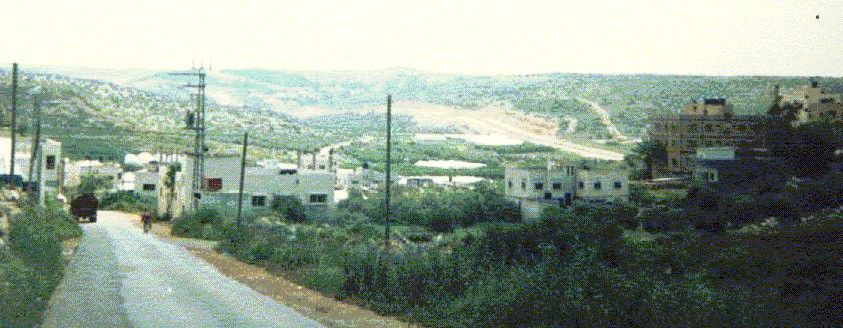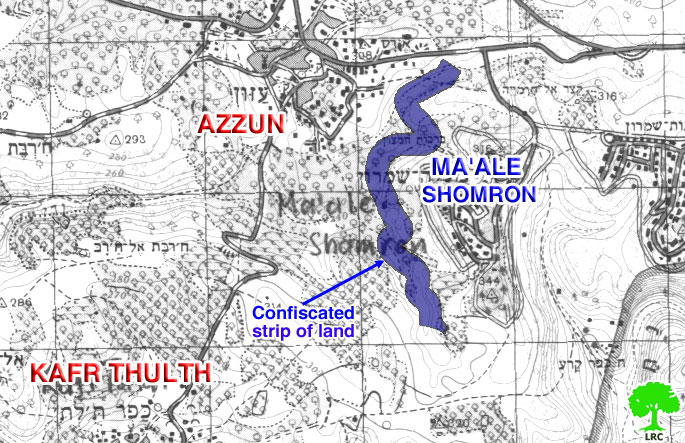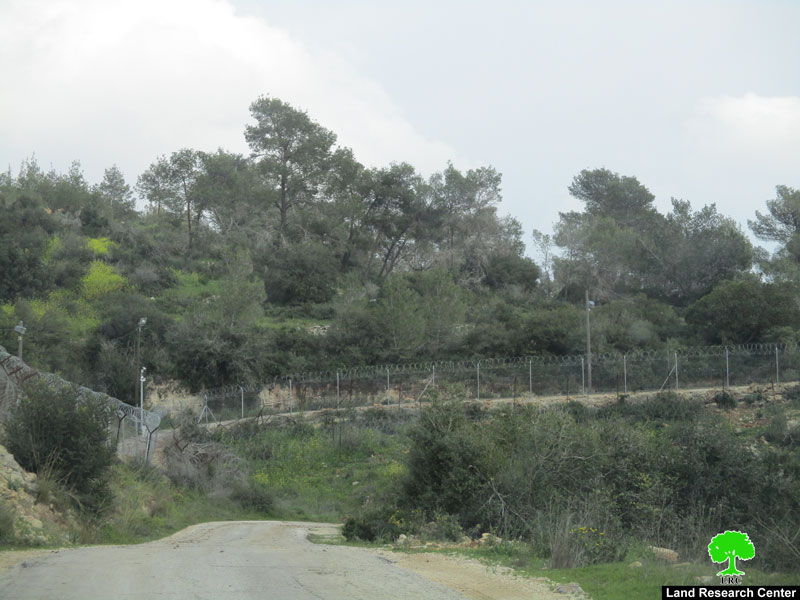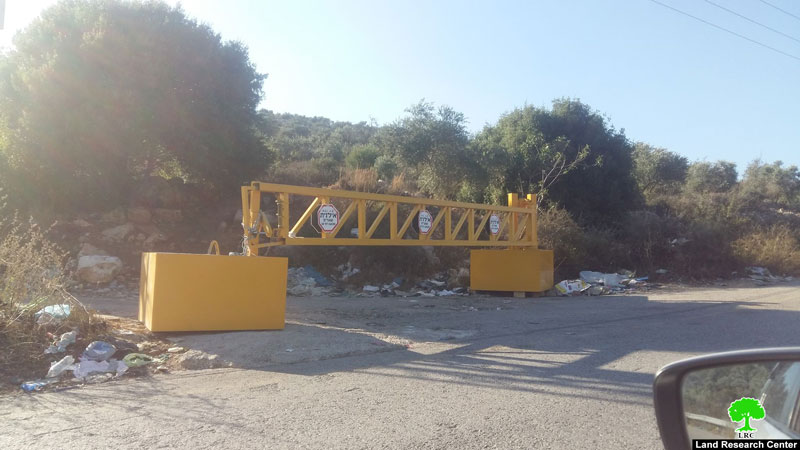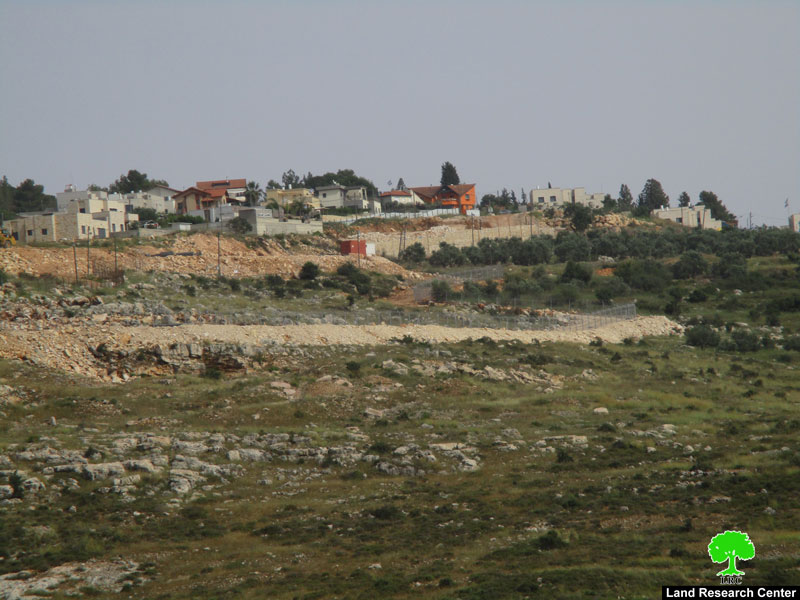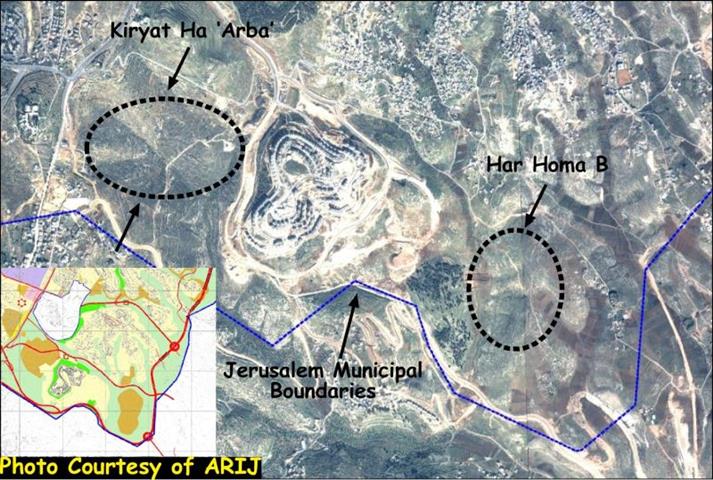On August 6, 2005, the Israeli army resumed work constructions in the Segregation Wall in Kafr Thulth and Azzun, in Qalqiliya governorate, after a 5 months halt in response to the Israeli high court's decision issued following a series of objections on part of Palestinian landowners and farmers in the targeted areas.
The total area of lands confiscated for this section of the Wall is 224 dunums, out of which, 110 dunums are located in the eastern part of Kafr Thuluth, particularly, in the areas of Ikhribat, Khaller Lora, Salama and Khallet Al Arz. The remaining 114 dunums are, also, located in the eastern part of Azzun in the areas of Ashifa, Um Al Khouf, At Tarbi'a and Al Kaffan. The total length of this section of the Wall is 2.1 km with an average width of 100 meters.
Location and population
The town of Kafr Thulth is located 6 kilometers away from the Green Line. Its lands extend from the town of Azzun in the north to the town of Sanniriya in the south, the Green Line in the west and the town of Deir Istiya in the east. It is, also, located 12 kilometers southeast Qalqiliya city. As for the latest population statistics (as late as year 2002), it indicates that the current population of the village is about 5,000.
The town is considered the 'mother' village of the following 'sub-villages': Izbat Salman, Izbat Jal'ud, Izbat Al Madwar, Ras at Tira, Ras Atiya, Al Daba' and Wadi ar Rasha. As such, the town of Kafr Thuluth and its satellite villages are considered one unit in terms of population and agricultural lands.
Following the 1948 War, 20% of the towns' lands which amounts to about 4,000 dunums were occupied. Two Israeli settlements were established on these occupied lands which became part of Israel's proper; the settlement of Nahal Yarhiv which was built atop of the ruins of the Palestinian town of Khraish and the settlement of Nirit which was built in a location called Ahrash Al Zaqoor. The remaining 80% of the land of the town remained within the borders of the West Bank.
The town of Azzun is located to the northeast of Kafr Thulth and it is about 8 km to the east of Qalqiliya city. It has the population of about 5200 inhabitants. See map 1: location map : location map
Land and trees threatened by the Wall
It is expected that a total of 598 dunums of Kafr Thuluth's lands will be segregated behind the wall once it is constructed. Out of the total, at least 58 dunums will be separated by the erection of the Wall around Ma'ale Shomron Israeli settlement located to the north east of the village of Kafr Thulth. This settlement was established in the year 1980 and it had the population of 549 in the year 2004, according to the statistics of the Foundation for Middle East Peace 2004. See photo 1: a general view of Kafr Thulth with the Wall path in the background. : a general view of Kafr Thulth with the Wall path in the background.
Another 1150 dunums of forest and olive planted lands are expected to become separated behind the Wall once it is completed on Azzun lands. Moreover, the Wall will lead to the uprooting and destruction of about 2400 long lived olive trees in these two villages.
It is worth mentioning that this Wall section is part of a five-section plan being implemented in Salfit and Qalqiliya districts with the aim of surrounding all the Israeli settlements in these two governorates with Wall belt as to ensure the annexation of these settlements located in the West Bank into Israel's proper under the name of Ariel finger (corridor). These settlements include, among others; Emmanuel, Ma'ale Shomron, Kedumim, and Ariel. See Map 2: a topographical map showing the path of the Wall in Azzun and Kafr Thulth lands. :
Affected Palestinians along with their foreign and local supporters led a number of protests and peaceful marches in protest against the Israeli plans in the Governorate, but, they were quelled with excessive force at the hands of Israeli soldiers and security personnel.
Prepared by
The Land Research Center
LRC


